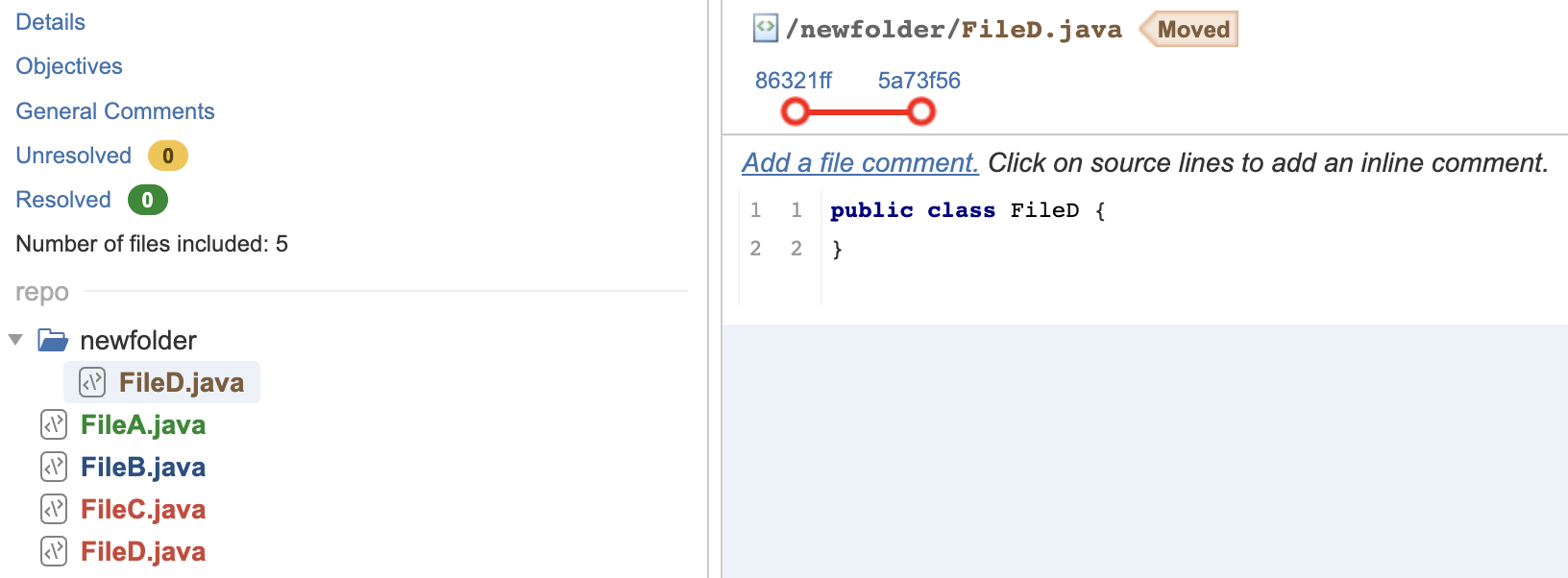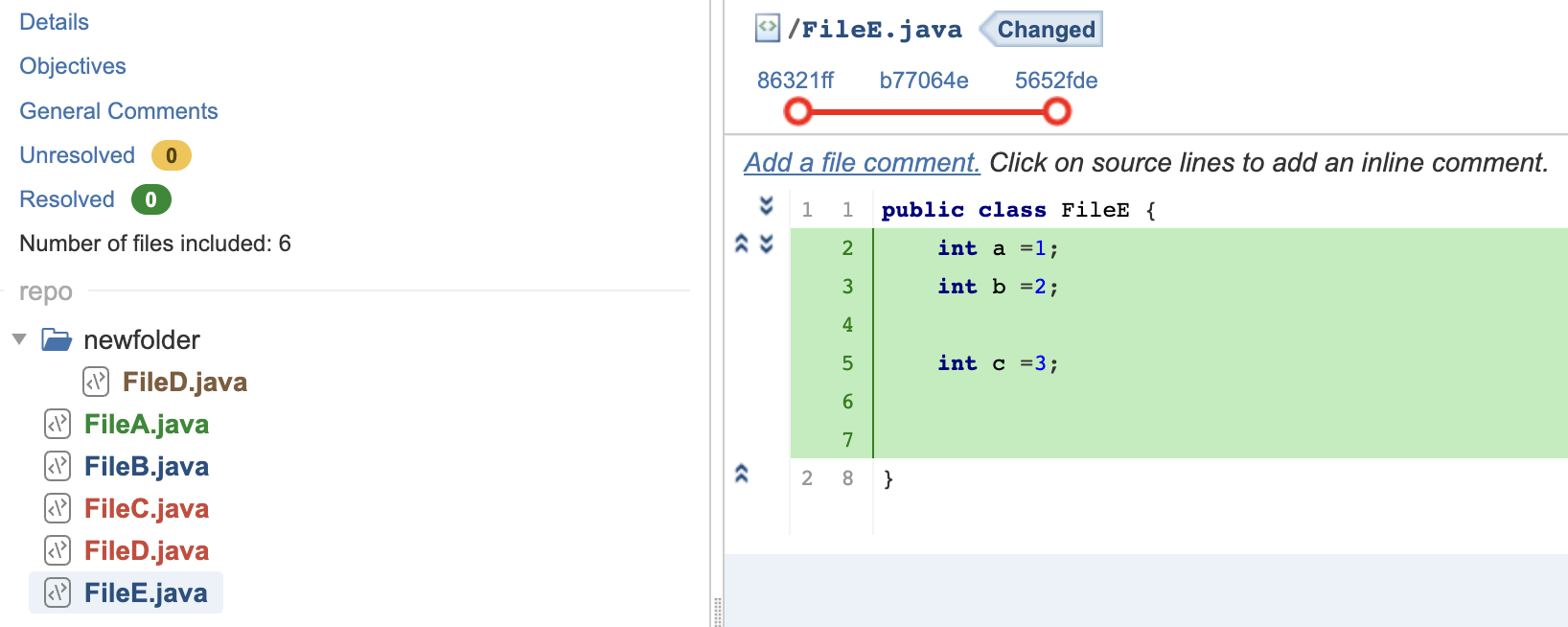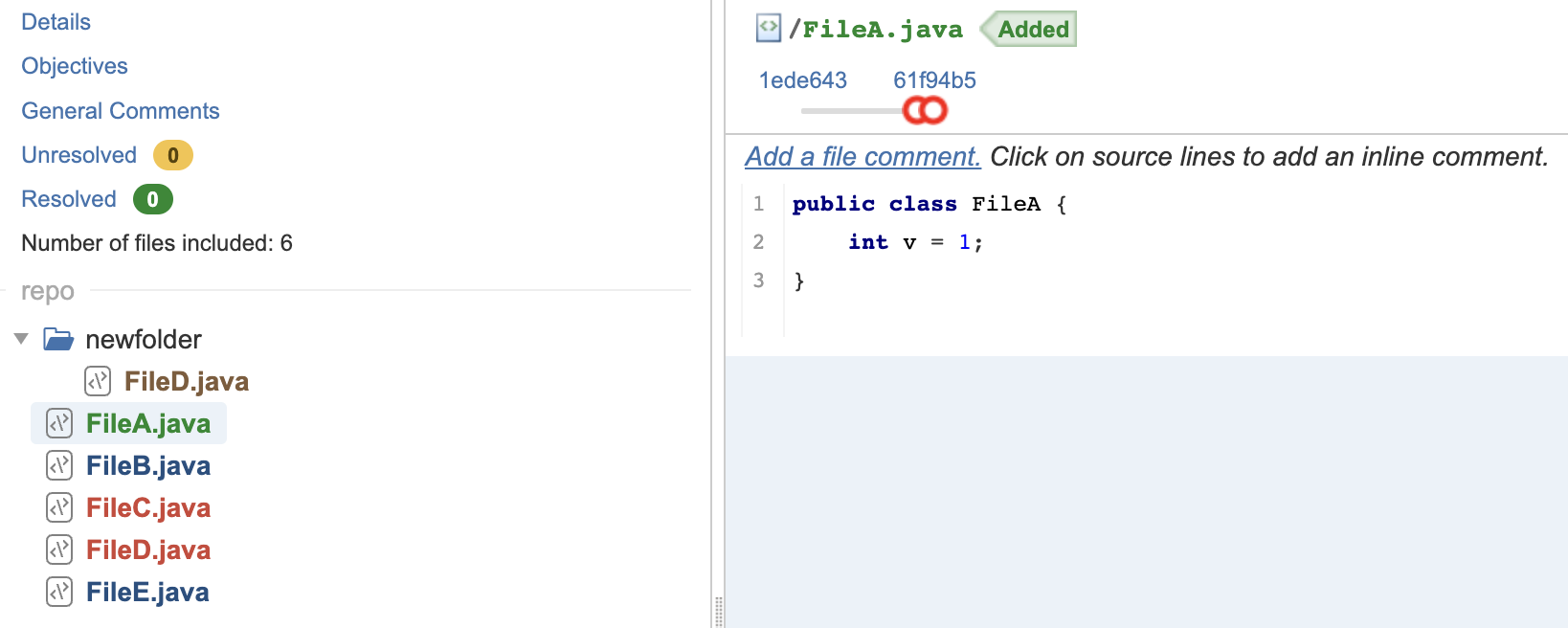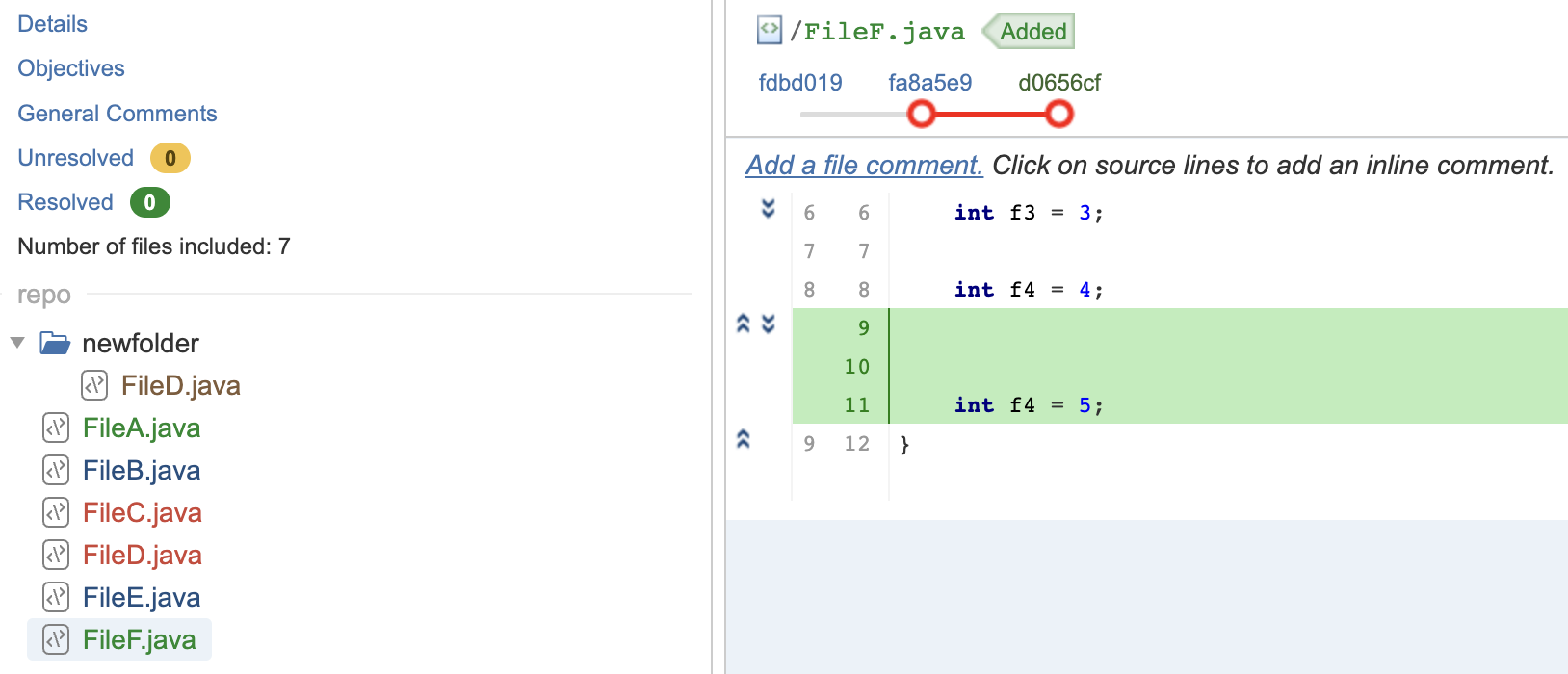Using the file revision slider
To create a review and use a slider
- Create a review
- Start the process for creating a review for either a single commit, or for all the commits related to the repository branch.
- In Crucible, the new review is in edit mode:
- The content of the branch becomes the content to be reviewed.
- Choose Tools > Start Review, in Crucible, when you are ready.
- Add new file to the custom branch, delete, move or modify existing and commit it. Refresh the review page.
- Move the slider from revision to revision to view file changes.
How added, updated, moved or deleted files are shown
An added file
Screenshot: Added file
The FileA created on the branch will be marked in the slider as the latest commit revision.
As there is only one revision, entire file content is shown.
The ADDED label is present.
A modified file
Screenshot: Updated file
The FileB updated on the branch will be marked in the slider as the start and end commit revision.
As there are two revisions, a diff is shown.
The CHANGED label is present.
A deleted file
Screenshot: Deleted file
The FileC deleted form review branch will be marked in the slider as the start and end commit revision.
As there are two revisions, a diff is shown and the entire file content is highlighted in red.
The DELETED label is present.
A moved file
Screenshot: Moved file
The FileD was moved to another directory on the branch and will be marked in the slider as the start and end commit revision.
In case file was both moved and modified, a diff of the changes will be shown too.
The MOVED label is present.
The FileD is also shown second time in the file tree as deleted in it's original location.
A modified file with several updates
Screenshot: Sequential update of the file
The FileE existed on the branch and has been updated several times. More than two revisions are presented on the slider. By default start and end of the slider are set to entire revision range to show all changes altogether.
A file diff is shown for all changes. A reviewer can drag the slider to see a diff for individual commits.
The CHANGED label is present.
A new file with a sequential update
Screenshot: Sequential update of the added file
The FileA is consistently updated once added to the review branch and will be marked in the slider at the last commit revision.
Both start and end of the slider are set to the last revision to show entire content of the file. This is because the file is new compared to the base branch and reviewer must review its entire content. A reviewer can drag the slider to see the diff of sequential updates of this new file.
The ADDED label is present.
How files are shown in the iterative review
Crucible supports iterative reviews. If a review is updated with a new content after it was started, Crucible by default will show newly added revisions. The slider state reflects the changes made and the highlighted area of the slider corresponds to the penultimate revision, and the latest revision.
A modified file with new updates
Screenshot: The review has been updated with the modified file
The FileE was modified several times and then review was updated.
The CHANGED label is present.
A new file with new updates
Screenshot: The review has been updated with a new file and new updates
The FileF was added and modified and then review was updated.
The ADDED label is present.
Notifications
When new content or new comments are added, a reviewer will be informed by a pop-up:









